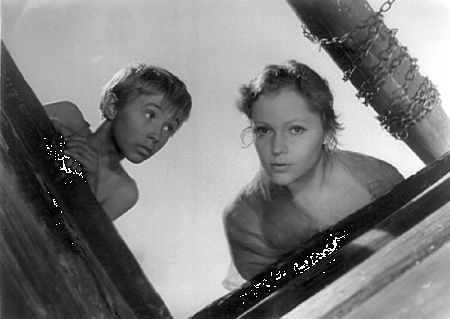After viewing Tarkovsky's first feature film, "Ivan's Childhood", we found his use of the camera be to creative and unique. This film won the "Golden Lion" at the Venice Film Festival in 1962, as well as "The Golden Gate Award" at the San Francisco International Film Festival of 1962. Tarkovsky used a variety of close-ups, as well as many visual tropes which we felt enhanced our viewing experience. For example, some of the visual tropes he used was when Masha ran through the woods, we, the audience, were her eyes. The camera was manually fixed from the person, giving us a glimmer of her perspective. Another visual trope used was the repeated pattern of scanning a wooded area, which consisted of a vivid white consistency of trees throughout. Through researching Tarkovsky, he states "a black-and-white film immediately creates the impression that your attention is concentrated on what is most important. On the screen colour imposes itself on you, whereas in real life that only happens at odd moments, so its not right for the audience to be constantly aware of colour" (Tarkovsky, 1993, p. 356). In fact, thus far, all of the films of Tarkovsky's which we have viewed have been in black and white. Furthermore, another visual trope used which we found unique and impressive was how he used the camera with water effects. One scene, we find Ivan working at the well with his mother. However, the camera angle is looking up from the well, seeming to be beneath the water, as a ripple effect goes across the screen. This is a rather surreal effect, making us the audience question the way in which he created this image.

When asked about his aesthetic principles regarding "Ivan's Childhood", he responds with, "Above all, I try to achieve maximum truthfulness in all that happens on screen, in terms of photography... I never construct a shot, and I always maintain that cinema can only exist by being totally identified with the images of life itself... If you start to sketch shots, to compose them intellectually, it will mean adulterating the principles of art" (Tarkovsky, 1993, p. 355). However, in "Ivan's Childhood" constructed shots are shown, and when asked about these shots, he states, "Yes, of course. But 'Ivan's Childhood' is a typical VGIK work of the kind that get dreamt up in the halls of residence" (Tarkovsky, 1993, p. 355). He continues to state that he was not fully invested in VGIK other than earning a degree, and this is evident when he states, "It is vital to break down the wall that separates VGIK from film production" (Tarkovsky, 1993, p. 360). This shows that while Tarkovsky wanted to learn, understand, and do film effectively, he had his own idea of what the art of film looked like.
While we understand that this is a foreign film, we did struggle in following the storyline of the film. We found it to be choppy, with a scene or two seeming random and misplaced, maybe even misleading. Although the film did not seem totally cohesive to us, we enjoyed Tarkovsky's ability to use the camera; the film was uniquely shot and very crisp.
Tarkovsky, A. (1993). Time Within Time: The Diaries 1970-1986. London: Seagull Books.

No comments:
Post a Comment